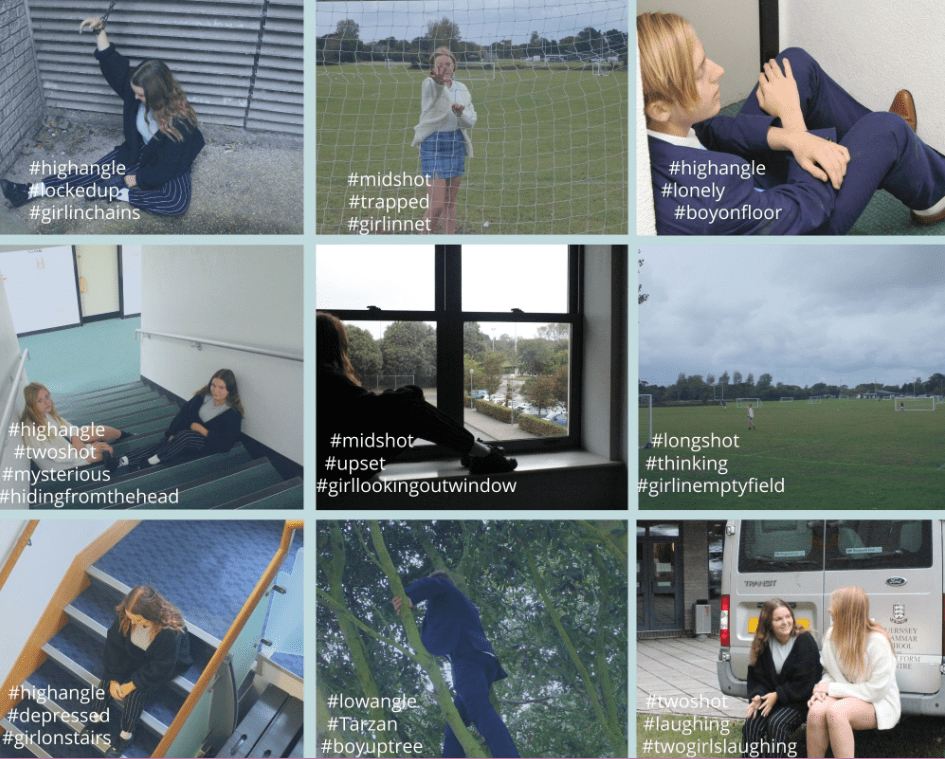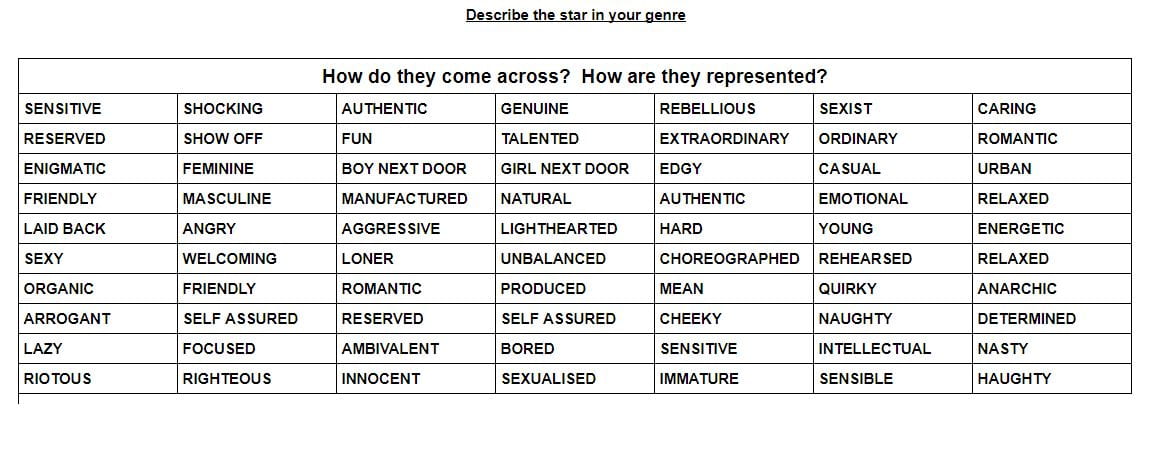KEY TERMS DISTANCE, ANGLE, FRAMING, COMPOSITION, NARRATIVE, REPRESENT, DENOTATION, CONNOTATION, NARRATIVE, IMAGE AND AN IDEA
This post has three elements to it.
TASK 1
In groups of @ 3, you must take at least 50 photos around school that attempt to tell a story – use distance, angle and framing to show how the camera can make meaning. Use each other as models or props that are easily obtainable. Think too about MES – particular body language, facial expression, posture, proxemics and gesture but the camera work is your main story telling tool.
For example:
- an extreme close up of a tear stained eyes could underline a character’s sadness and vulnerability.
- an extreme long shot of a man standing alone on a deserted beach might portray his isolation and solitude.
- a two shot of a two people, with one in the foreground looking away from the camera and the other slightly out of focus in the background could add an enigmatic, mysterious feel to the scene as well.
Remember to consider:
- Angle – high, low, canted x 3, aerial
- Distance – ECU, MS, LS, ELS x 3
- Composition – rule of thirds, lead space and Depth of Field x 3
Upload the photos to a folder.
Task 2
Choose 9 shots that show different framing, angles, composition, distance to help represent different narratives.
Using Canva – embed the 9 different shots.

Annotate each photo with:
- #denotation/#technical term/#connotation i.e.
- #manaloneincarpark#longshot#lonliness
Task 3
Reflect on how you have used a camera angles, composition, distance, framing and MES of proxemics, facial expressions, body language and props to help convey a narrative and represent an idea. Use the key terms from the start of this post.
